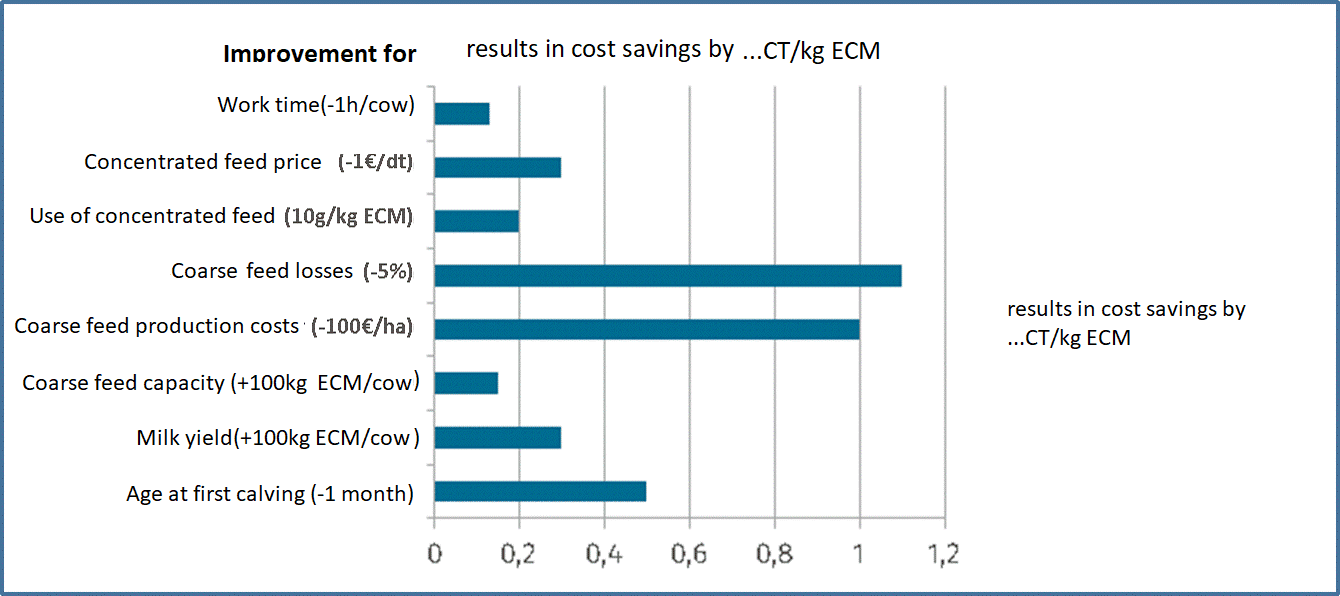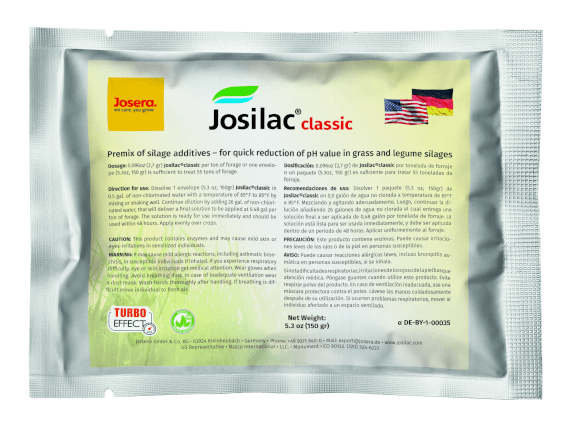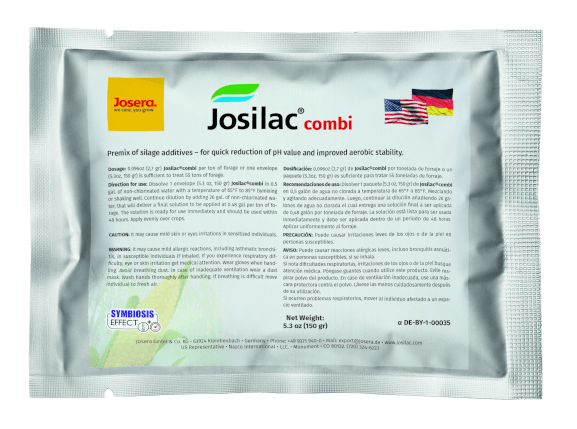Effects of silage quality on feed costs and animal health!
Every year, when introducing grass and corn silage, it is important to achieve the best result in accordance with the weather conditions and the care and fertilisation measures as well as the work procedures. These challenges change every year and so do the achieved results.
Everyone knows that losses in silage quality have negative consequences for feed costs and animal health. However, it is not easy to see at first glance how this is expressed in concrete figures. This article will take position into this aspect. Of course, the prices are not the same for all regions, so this results in differences that everyone can calculate for their own farm.
Contents
Rations with different silage quality
| Feed (kg) | Feed (kg) | Silage A | Silage B |
|---|---|---|---|
| Grass silage 1 | 5 | 18 | |
| Grass silage 2 | 5 | 15 | |
| Corn silage 1 | 4 | 18 | |
| Corn silage 2 | 4 | 15 | |
| Straw | 12 | 0.7 | 0.6 |
| Wheat/barly | 15 | 5 | 6 |
| Grain corn | 19 | 2.0 | 3.0 |
| Soy meal | 38 | 1.3 | 1.75 |
| Rapeseed meal | 22 | 1.3 | 1.75 |
| Mineral feed | 62 | 0.4 | 0.4 |
| DM-intake (kg) | 22.1 | 22.0 | |
| Milk yield (kg) | 36,4 | 36.0* | |
| DM from forage (kg) | 13.2 | 10.6** | |
| Concentrated feed (kg) | 9.6 | 12.5** | |
| Starch/ sugar (%) | 30,5 | 33,8** | |
| Cost in euro/ animal | 3,79 | 4,17*** |
* 36 kg are not realistically possible with ration B
** high health risk
*** Additional cost of ration B = 0.38 euro/animal and day = 138 euro/year!
| Table 1: Silage quality | DM | CP | CF | NEL |
|---|---|---|---|---|
| Grass: very well | 350 | 184 | 214 | 6.6 |
| Gras: well | 350 | 155 | 276 | 6.0 |
| Corn: very well | 350 | 81 | 6.9 | - |
| Corn: well | 350 | 82 | 6.9 | 0 |
In this case, a balanced ration of grass and corn silage in the feeding conditions serves as an example. The ration is designed for the high-performance group at 36 kg milk production value with a dry matter intake of approx. 22 kg.
Ration A – silages with very good quality
In Ration A, the silages have excellent ingredients. The two feed components were calculated using the contents highlighted in dark green in table 1. The upper line refers to the values of the grass silage and the lower line the values of the corn silage. In order to achieve a milk yield of 36 kg, straw was added for the structure, cereals, corn, and protein feed. The mineral feed used here also includes salt and feed lime, which are contained in these 14 oz.
The result of Ration A represents a basic feed to concentrated feed ratio of approx. 58% : 42%. Starch and sugar are already at the upper limit of the recommendations with 30.5%. The cost is $4.53 per animal and day.
Ration B – silages with good quality
Ration B shows the situation when feeding silages with good ingredients (values highlighted in light green). Because of the lower values, which are related to protein and energy content, these must be balanced by more energy and protein feeds. To make the situation comparable, the same requirement applies here as for Ration A (Milk yield 36 kg for DM intake 48 pounds). The increased concentrated feed requirement thus displaces basic feed, whereby the contents must be reduced by 7 pounds and the amount of concentrated feed increased by approx. 7 pounds.
For ration B, this leads to the following result: the basic feed–concentrated feed ratio shifts to approx. 46:54%. The starch and sugar content are now 33.8%. This can have a significant negative effect on the health of the cow. Rumen acidosis, reduced digestive activity and claw diseases can be possible consequences here. The cost of the ration rises by 38 cents per animal and day. With a farm size of 500 animals, this corresponds to an additional expenditure of more than $82,000 per year. It is also aggravating that rising veterinary costs and increased replacement rates are not yet included here. Even the requirements with 36 kg milk yield cannot realistically be achieved with this ration.
Possible cost savings
 Figure 2: Possible cost savings in cents/kg ECM (source: Dr G. Dorfner, State Office for Agriculture, supplemented and modified)
Figure 2: Possible cost savings in cents/kg ECM (source: Dr G. Dorfner, State Office for Agriculture, supplemented and modified)In a study, the Bavarian State Office for Agriculture published the values shown in figure 2 for possible savings in terms of costs in cents per kilogram of energy-corrected milk. The biggest factors here are coarse feed losses and coarse feed production costs.
Just before the upcoming grass harvest, the possible variants for your own farm should be reviewed here again: In addition to the known grassland measures and processes in silage management, cutting time and the targeted use of silage inoculants play an important role. An early cut and the controlled fermentation process resulting from the silage inoculant produce high-quality and stable protein in the silages.
You might be interested in the following contents:
Contact & Service
Would you like detailed information or a consultation? The more precisely you specify what interests you, the better we can assist you. Are you interested in purchasing Josilac® silage inoculants? We are glad to put you in touch with our dealer near you. Just send us a message with your request.

